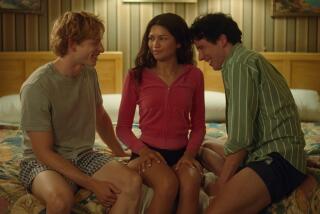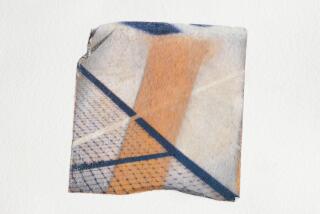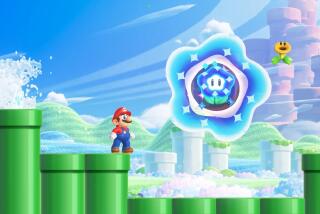‘Mario Tennis Aces’ and the love of low-stakes competition
“We’re tennis rebels.”
Modern tennis, despite the occasional rant at a line judge or Andre Agassi circa his long hair days aside, isn’t a sport known for an insurrection. But Nintendo became a video-game giant by defying convention.
When the mushroom-headed Toad declares early on in “Mario Tennis Aces” that he and his pal Mario don’t abide by the rules of the game it’s more than welcome, though rather than celebrate athletes behaving badly, “Mario Tennis Aces” simply champions ridiculousness.
Here, tennis matches — as well as tennis trials such as hitting snowballs with a racket — are largely just a means to settle disputes, and instead of the All England Lawn Tennis & Croquet Club, games occur in haunted mansions or the decks of ships or a train depot.
Serena Williams and Roger Federer may have used this month’s Wimbledon as an opportunity to cement their status as two of the greatest players ever (which ESPN noted every five minutes), but in “Mario Tennis Aces” a magic evil mirror can provide the competition — or land some not-so-barbed jabs (“Mr. Too Cool to Shave” is how a gaggle of mirrors describe the mustached plumber Mario).
It’s sports as silliness, and I’ve become rather smitten with it. “Mario Tennis Aces” reminds us that real-life sports weren’t always so serious or financially draining. Today, pro games are dominated by talks of who’s signing with whom, who’s standing or sitting for the national anthem, what franchise owners are investing in what political causes and, more personally, the fear of how many months it will take to pay off two box seats at a three-hour baseball game.
So it took an overweight plumber battling a princess with a ferocious backhand and a ghost with a mysterious spin shot to remind me that sports are mostly fun. And by giving the game an ever-so-slight story, Nintendo and developer Camelot Software are also combating some of the fatigue of mainstream games. Though the adventure of “Mario Tennis Aces” isn’t as robust as some of Nintendo’s earlier sports games, the light role-playing aspects feel like a relief after so many kill-or-be-killed titles.
The story will be relatively familiar to anyone who’s seen an “Avengers” film: Mario’s brother Luigi gets corrupted by a seemingly cognizant tennis racket that can only be stopped by a series of colored gem stones. So powerful is this racket that it instantly controls whoever touches it.
If the racket grows in strength, it’s implied, who knows what havoc it can create? Mass princess kidnappings? Amassing all the world’s gold coins? Flipping the Mushroom Kingdom to fascist Goomba rule? It’s never spelled out, but the racket must be stopped.
This sets Mario and Toad off on an adventure that has them playing tennis against mysterious creatures in a cave or masked oddities in the middle of a courtyard in a mountain town. This was my favorite because townsfolk (towns-critters?) cheerily walked right through the tennis game and didn’t mind at all being hit. But be careful — lobbing a ball into a pedestrian can send said ball veering into unusual directions.
Throughout, one should forget any standard rules of tennis. Rackets can be made of wood — or glass — and one can win by “knock-out,” that is by shattering the racket of an opponent. Like Nintendo’s “Super Smash Bros.” franchise, characters here come with a bevy of special moves. They’re seemingly simple to pull off but Mario and, in competition mode, my go-to player of Princess Daisy, continue to move in ways I fail to easily re-create (I am uncoordinated, and therefore often press randomly).
There’s some strategy involved here. Sustaining a rally will build up a character’s stamina, allowing for special moves to be either pulled off or defended against. If an opponent hits an especially insane shot, having some stockpiled energy will allow the play to put the game into slow-motion mode. If one’s racket is near breaking, it may be best to let certain powerful shots sail past, as only “blocking” — that is, swinging at the right moment — will keep the racket intact.
“Tennis Aces” brings a sense of fantasy and whimsy back to sports. Increasingly, game developers are loading sports titles up with so-called franchise or career management modes, allowing players to essentially adopt an athlete or a team to manage everything from contract negotiations to drafts. There’s certainly a place for that level of simulation, but “Mario Tennis Aces” effectively argues that just because we can make things bigger, longer and more complex doesn’t mean that we should.
Any early criticism that its narrative mode is too simple and lacking true role-playing aspects seems more about longing for a different sort of game — the tale is a tad twisted and character animations are exaggeratedly detailed, touches that allow this refreshingly easy-to-pick-up game to leave plenty to the imagination.
In story mode, Mario encounters many of his familiar enemies, but fire-breathing plants and Bowser’s turtle-like minions aren’t trying to steal one of Mario’s endless lives. Here, it’s all about the duel. While not particularly long, the narrative provides an easy way to try to master all of the game’s random trick shots, which will come in handy for those brave enough to venture online and play in competitions with strangers.
But for now, I’m happy revisiting the story, or strictly battling computer-controlled foes. That’s because in these moments, “Mario Tennis Aces” all feels surprisingly polite. Since enemies are fought via tennis matches — or tennis-like matches, to be more precise — they don’t have to be pummeled into nothingness for Mario to win.
At a time when the pros and cons of civility are a public debate, and being different can lead to being bullied, “Mario Tennis Aces” feels blissfully out of step with not only sports game trends but society at large. A moderately diplomatic Mario game is what truly feels rebellious.
Follow me on Twitter: @toddmartens
More to Read
The biggest entertainment stories
Get our big stories about Hollywood, film, television, music, arts, culture and more right in your inbox as soon as they publish.
You may occasionally receive promotional content from the Los Angeles Times.











